Looking out the window watching the snow fall down from the gray sky above wondering if a plane any plane would be landing to take me on to my next destination I opened up the National Weather Service search results for Nome, Alaska. Temperature 21 degrees, due point 21 degrees, relative humidity 100%… Great… that means freezing rain. On top of that they were giving Nome the LIFR tag (Limited Instrument Flight Rules) with less than a half a mile visibility. My hopes of leaving Elim today… Not very good.
About a half an hour later however Hutch the local Bering Air agent called and informed me that there was a caravan coming into Elim in the next 35 minutes. I quickly gathered up my bags that had been strewn across Steve’s apartment and around a room in the school. With about 10 minutes until the flights arrival I was given a ride up to the airport. Sure enough here comes a caravan buzzing through the freezing drops falling from the sky. He lands in the foot of snow on the runway and taxis over to us. As I’m putting my bags in the belly pod I notice the build up of ice on the leading edge of the wings and struts. No worries though.. It wasn’t very thick and the caravan has boots installed on the front of the wings, struts, and tail, not to mention the prop blades are heated. So with our bags loaded the pilot and the three passengers including myself climb aboard. The pilot is just about to close his door when Hutch’s wife shows up and tells the pilot that Nome called and wants us to fly to Unalakleet. The weather in Nome has gotten worse. The pilot says “the weather in Unalakleet isn’t much better. We’ll just stay here until the weather lifts in Nome.” So we hop off the plane and the pilot jams a sleeping bag type material into the intakes on the engine while the two other passengers are getting rides back to town.
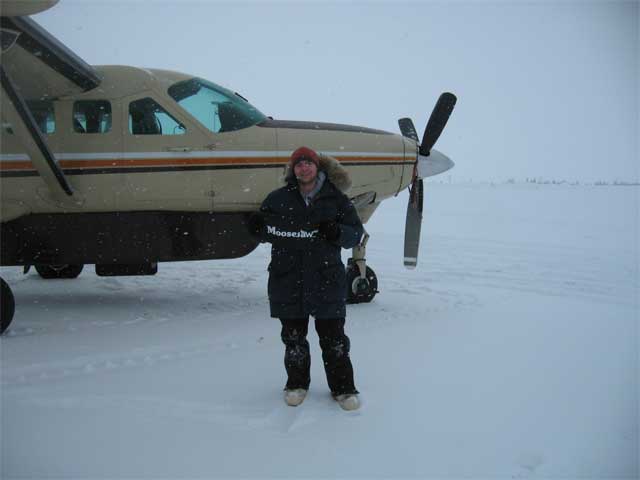
I was talking with the pilot and asked him how the boots work to keep the ice from building up too much during flight. The way they work is after a substantial amount of ice builds up (about a half an inch or so) he activates the boots from inside the plane. They spontaneously fill with air expanding at a high rate of speed. This quick enlargement causes the build up of ice to break up and fall off the plane. He also mentioned that there is a newer technology which involves a titanium leading edge on the wings and struts that has very little holes poked all through it. If the pilot is flying in icing conditions he activates the system and ethanol is pushed out through all those little holes and covers the entire wing and parts of the plane. This ethanol melts what ice is there and prevents any more ice from building up. He said that using this system you can fly through the worst icing conditions without a problem. The reason they haven’t upgraded to this system yet is to outfit one caravan runs about 50,000 dollars.
The black liner is the boot…

About 45 minutes later I got to experience the boot in action first hand. We got a call from Nome and they told us we needed to go to Unalakleet. Their weather had improved and they had de-icing equipment there. So we hopped back into the plane and headed that direction. About 10 minutes before landing in Unalalkleet he popped to boot and looking out my window I could see it expand and chunks of ice fly off the wings and struts. Very impressive and nice to know we have that option when flying in not so savory weather.
We were only in Unalakleet for about 5 minutes when we were notified that the weather in Nome had improved considerably. So the pilot loaded up about 3,000 pounds of freight put in three hours of fuel and we were back in the air. This time headed for St. Michael, Stebbins, and then on to Nome.
In St. Michael we dropped off a little mail. Not much. In Stebbins however thats where the majority of the 3,000 pounds went. I helped the pilot empty the plane. It took the two of us about 5 minutes to get all of the supplies out. There was everything from snowmachine (snowmobile for those of you down south) parts to bags of rice, reems of paper, canned food, mail, a few boxes labeled “Burger King”, and an assortment of other boxes with unknown contents.
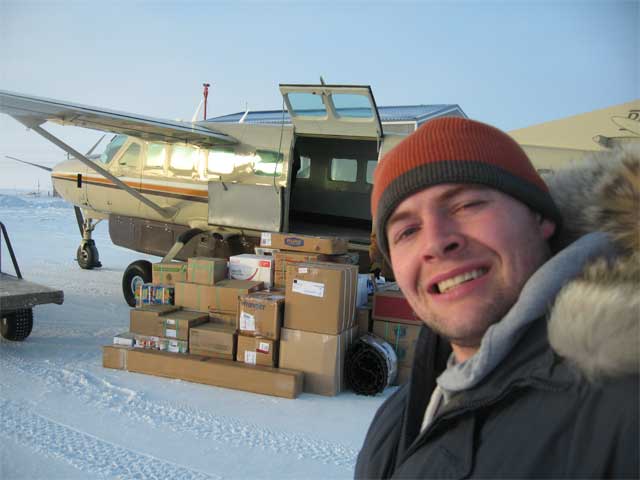
I will be staying in Nome tonight and flying out to the Island in the morning. My first stop should be Savoonga, then Gambell the next day. I hope the weather decides to play nice.
At this moment I’m in the middle of my 12th flight and approximately 56.2 nautical miles from Nome flying at 6,560 ft. over the partially frozen ocean below.


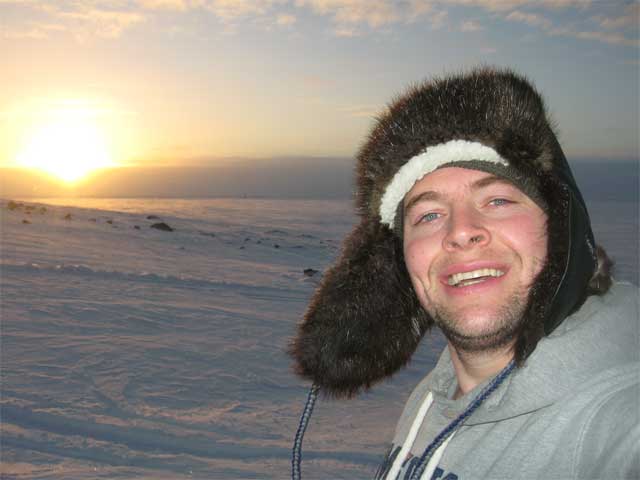






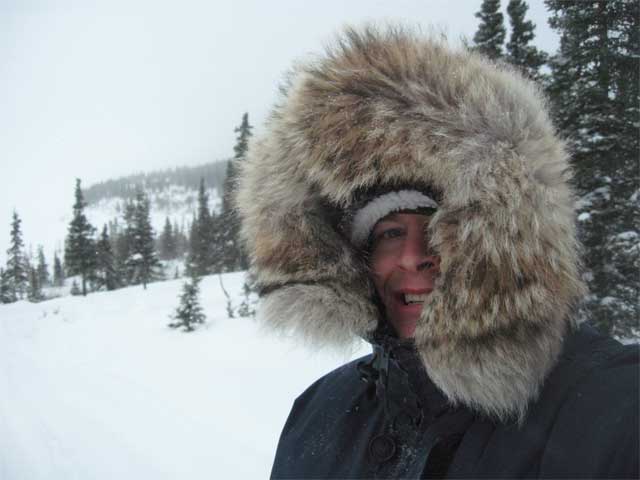
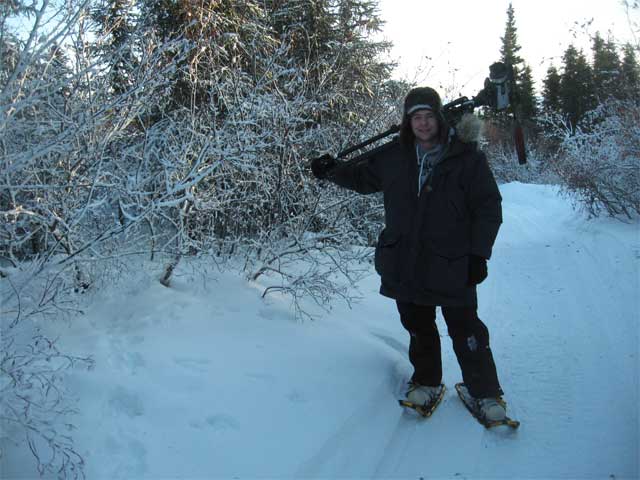
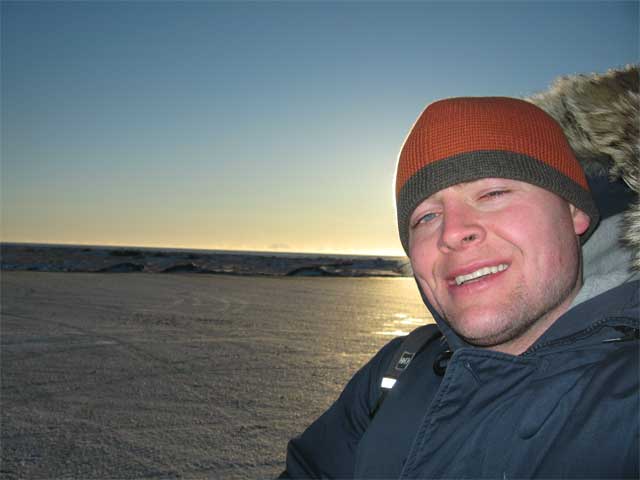
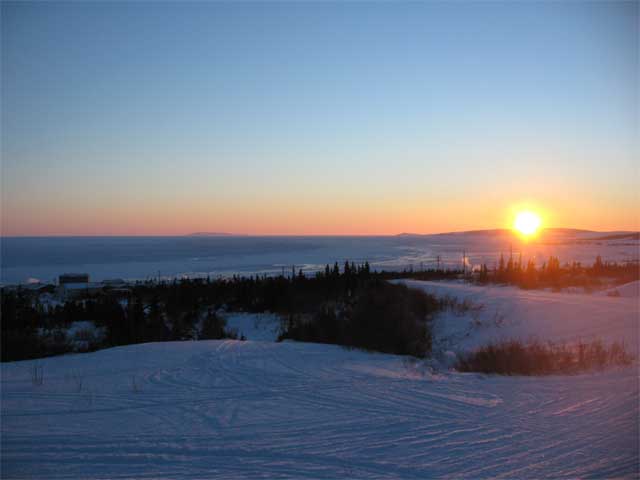



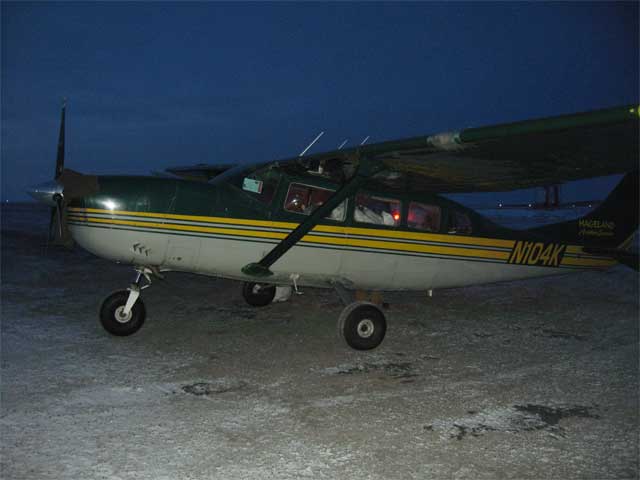
Recent Comments